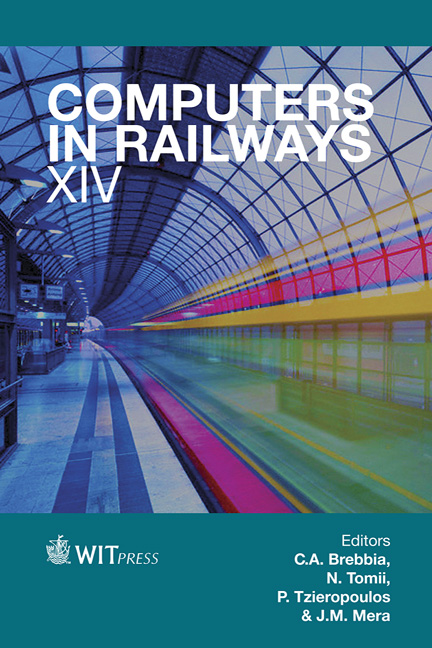Zonal Operations: A Method To Rationalise Operations
Price
Free (open access)
Transaction
Volume
135
Pages
12
Page Range
353 - 364
Published
2014
Size
913 kb
Paper DOI
10.2495/CR140291
Copyright
WIT Press
Author(s)
W. M. Guzman, K. J. Peszynski & L. W. Young
Abstract
In August 2013 and for the third consecutive year, Melbourne has been accredited as the most liveable city in the world. However, the city is also known and credited for a less attractive reason as \“The City of Level Crossings”; the city’s metropolitan area is home to 170 railroad level crossings (RLX). Since 2006, Melbourne has experienced unprecedented train patronage demand. Victorian transport authorities, facing capacity, demand and overcrowding problems, have acquired new train sets, established new timetables that introduced additional urban train services, and prepared long term plans to address the issue. However, the additional train services result in a ‘catch 22’ situation. The additional train traffic causes extra boom gate activity at railroad level crossings, which in turns leads to additional vehicles congestion on Melbourne’s roads. This research investigates and proposes the introduction of Zonal Operations (ZO) in the Caulfield Group corridor that includes some of Melbourne’s longest and busiest lines within the rail network. The research discusses the concept of ZO, analyses the claim that ZO resolves capacity and overcrowding problems, a claim proposed in research literature. In addition, this research confirms that ZO has the potential to reduce the number of times boom gates are lowered at RLXs, and to mitigate road traffic congestion at RLXs. By doing this, a better understanding is gained in how ZO in railways can be used to mitigate road traffic congestion issues at RLX locations. Keywords: railroad level crossings, Z onal Operations, time tables.
Keywords
railroad level crossings, Z onal Operations, time tables.





